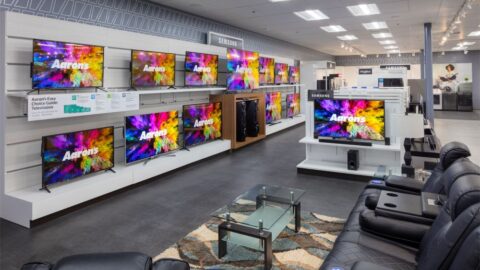Nearly two-thirds of consumers (65%) say they “love” fewer than three brands, according to a U.S.-based survey conducted by Dynata. Moreover, nine in 10 proclaim they do not love nor are loyal to a single brand.
With customer behaviors and expectations changing so rapidly, it’s difficult to pinpoint what truly drives this lack of brand love and loyalty. But research from PwC points to a few key factors, including discrepancies between what consumers and executives deem important.
While both executives and consumers agreed that product was a critical loyalty driver, garnering 46% and 48% of respondents respectively, there was a significant disconnect when it came to secondary factors. For example, while 35% of consumers said it was important that products were easy to find and purchase, only 17% of executives agreed. Conversely, 20% of executives thought “community belonging” was a critical loyalty driver, while only 8% of consumers said the same.
Granted, executive respondents to this survey spanned retail, supermarket, consumer goods, airlines, entertainment and media and even financial services, so these results reflect a broader view of how business leaders are thinking about loyalty. But what’s happening in retail specifically? What challenges are retailers facing and, most important of all, how are they addressing them?
For its latest Customer Loyalty and Personalization Survey, Retail TouchPoints investigated how the economy has impacted consumers’ loyalty to brands, and how issues like ESG, product availability and personalization influenced their spending. Key takeaways include:
- Financial pressures still have an impact on purchasing decisions: Inflation has intensified retailers’ headaches. Even though it has retreated from the highs of 2022, the damage has had long-term ripple effects. In fact, 37% of retailers cited losing customers due to product price increases as a significant customer loyalty challenge, while 25% identified higher customer charges for formerly free or low-cost services such as shipping and return fees.
- Retailers are diversifying their digital mix to reach and resonate with more consumers: Key channels like email have remained top of mind for brand marketing teams, but some respondents shared that they’re investing in newer tactics to understand their impact. For example, 18% of retailers said they used metaverse stores and offerings as customer acquisition tools in 2023. In addition, connected TV (CTV), which offers more precise ad targeting and campaign effectiveness measurement, is on the rise: its use increased to 16% in 2023 from just 9% in 2022.
- As new media and engagement channels multiply, experience disconnects remain prevalent: One in three executives said their ecommerce sites were not optimized for personalization, and nearly as many (31%) reported that they are unable to align ecommerce and in-store touch points — the latter figure up from 23% in 2022. As consumer choices continue multiplying and expectations for personalized offers and recommendations keep rising, brands will need to step up their efforts to master these customer loyalty basics, especially as they prepare for the critical holiday season.
- Despite new challenges, executives are leaning into their ESG efforts: A new question for the survey dug into the role of ESG (environmental, social and governance) commitments in executives’ loyalty strategies. While retailers like Target are feeling the heat from their efforts, retailers are trying to showcase how they’re actualizing their social and environmental commitments. For example, more than half (53%) of retailers now spotlight the recycled or recyclable nature of their products, with 52% trumpeting their environmental sustainability and 49% talking about fair treatment of their workers.
- Retailers are eager to test the generative AI waters: Retailers are looking beyond their traditional loyalty programs and are exploring how personalization can help enrich shopper relationships. While customer data platforms and other analytics tools have been the most widely used tools to support these efforts in previous years, we’re now seeing more retailers test generative AI to support personalized content and experiences at scale. More than one-quarter (27%) of retailers already use generative AI/machine learning to support their personalization efforts, with another 13% saying they plan to implement these solutions within the next 12 months.
This year’s survey results offered insights on many other trends and realities shaping retailers’ loyalty efforts, including product availability, employee turnover and even new changes to loyalty programs. Download a copy now to see how your peers are deploying strategies to retain and engage customers long term.















